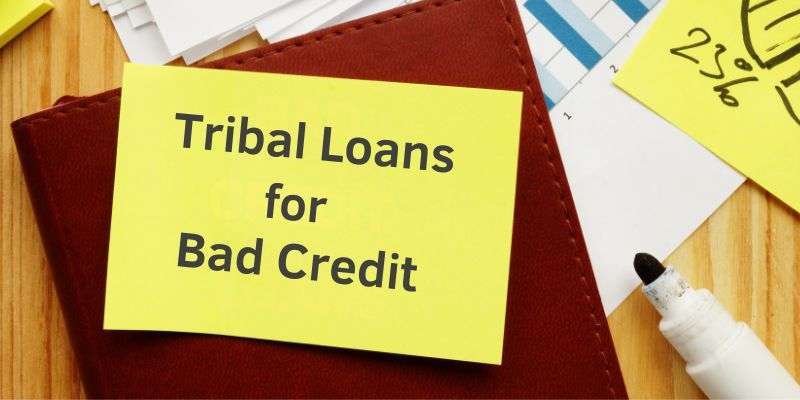Navigating the financial world with bad credit can be dangerous. Traditional lenders often turn away those with poor credit scores, leading many to look for alternatives. One such option is tribal loans. This comprehensive guide will teach you everything you need to know about tribal loans for bad credit, including their benefits, risks, and how to apply.
What Are Tribal Loans?
Definition and Overview
Tribal loans are personal loans offered by lenders based on Native American reservations. These loans are usually short-term and have a higher interest rate. They are regulated by tribal law rather than state law, which can offer unique benefits and risks.
How Tribal Loans Work
Tribal loans work like payday loans. Applicants submit their requests online. If accepted they get the funds promptly. The repayment periods are usually brief spanning from a couple of weeks to months, with high interest rates.
Benefits of Tribal Loans
Accessibility for Bad Credit
One of the main benefits of tribal loans is their accessibility. Lenders offering tribal loans are often more willing to work with borrowers with bad credit than traditional banks.
Quick Approval and Funding
Tribal loans are known for their quick approvals. Numerous lenders can endorse applications in practically no time and transfer funds by the following work day.
Flexibility
These loans offer flexibility in terms of loan amount and repayment schedule. Borrowers can often choose loan sizes and types of terms that best suit their financial needs.
Risks and Considerations
High Interest Rates
Tribal loans carry much higher interest rates than traditional loans. This can make them more expensive, especially if it is not paid on time.
Short Repayment Terms
Short repayment periods can be difficult for borrowers, and failure to repay loans quickly can lead to potential financial stress.
Regulatory Environment
Since tribal loans are regulated by tribal laws, they may not offer the same loan recipient protections as state-regulated loans. This could lead to variations in terms related to disclosure and repayment.
How to Qualify for a Tribal Loan

Eligibility Requirements
Eligibility requirements vary by lender, but generally include:
- Being at least 18 years old
- Having a regular source of income
- Possessing a valid bank account
- Providing proof of identity and residence
Application Process
- Research Lenders: Look for reputable tribal lenders with positive reviews.
- Gather Documents: Prepare fundamental documents, like proof of income and ID.
- Apply Online: Complete the online application form with accurate information.
- Await Approval: Wait for the lender to review your application. This normally requires a couple of hours.
- Receive Funds: Whenever approved, the funds will be deposited into your bank account.
How to Use Tribal Loans Wisely
Assess Your Financial Situation
Before applying, assess your financial situation to decide whether a tribal loan is the best choice. Consider different alternatives and ensure you can repay the loan within the terms.
Create a Repayment Plan
Make a repayment plan to avoid defaulting on your loan. This includes budgeting for repayments and ensuring that payments are made on time.
Avoid Rollovers
Some lenders offer rollovers, which extend the repayment period but raise the overall cost of the loan. Avoid a rollover to avoid falling into the debt cycle.
Alternatives to Tribal Loans
Personal Loans from Credit Unions
Credit unions frequently offer personal loans with additional favorable terms than tribal loans. They may likewise be more willing to work with borrowers with bad credit.
Secured Loans
Secured loans, which require a guarantee, can be a reasonable choice. These loans commonly have lower interest rates and better terms.
Borrowing from Friends or Family
If possible, consider borrowing from friends or family. This can give you the funds you want without the high costs related to tribal loans.
Legal Considerations
Tribal Sovereignty
Tribal lenders work under tribal sovereignty, meaning they are dependent upon tribal law instead of state law. This can impact the terms and conditions of the loan.
Federal Regulations
Some federal regulations still apply to tribal loans, including the Truth in Lending Act (TILA), which requires lenders to disclose loan terms and costs.
Conclusion
Tribal loans can help people with bad credit who need money quickly. In any case, they tend to have higher interest rates and shorter repayment terms, making them even more selective. Carefully, weighing benefits and risks, exploring alternatives, and using tribal loans are reliable assuming you choose to proceed.
Understanding the intricacies of tribal loans allows you to evaluate each of your options and go with the educated one that best suits your financial needs.
Learn more about asset protection strategies in our article DOES A TRUST PROTECT YOUR ASSETS FROM LAWSUITS?

